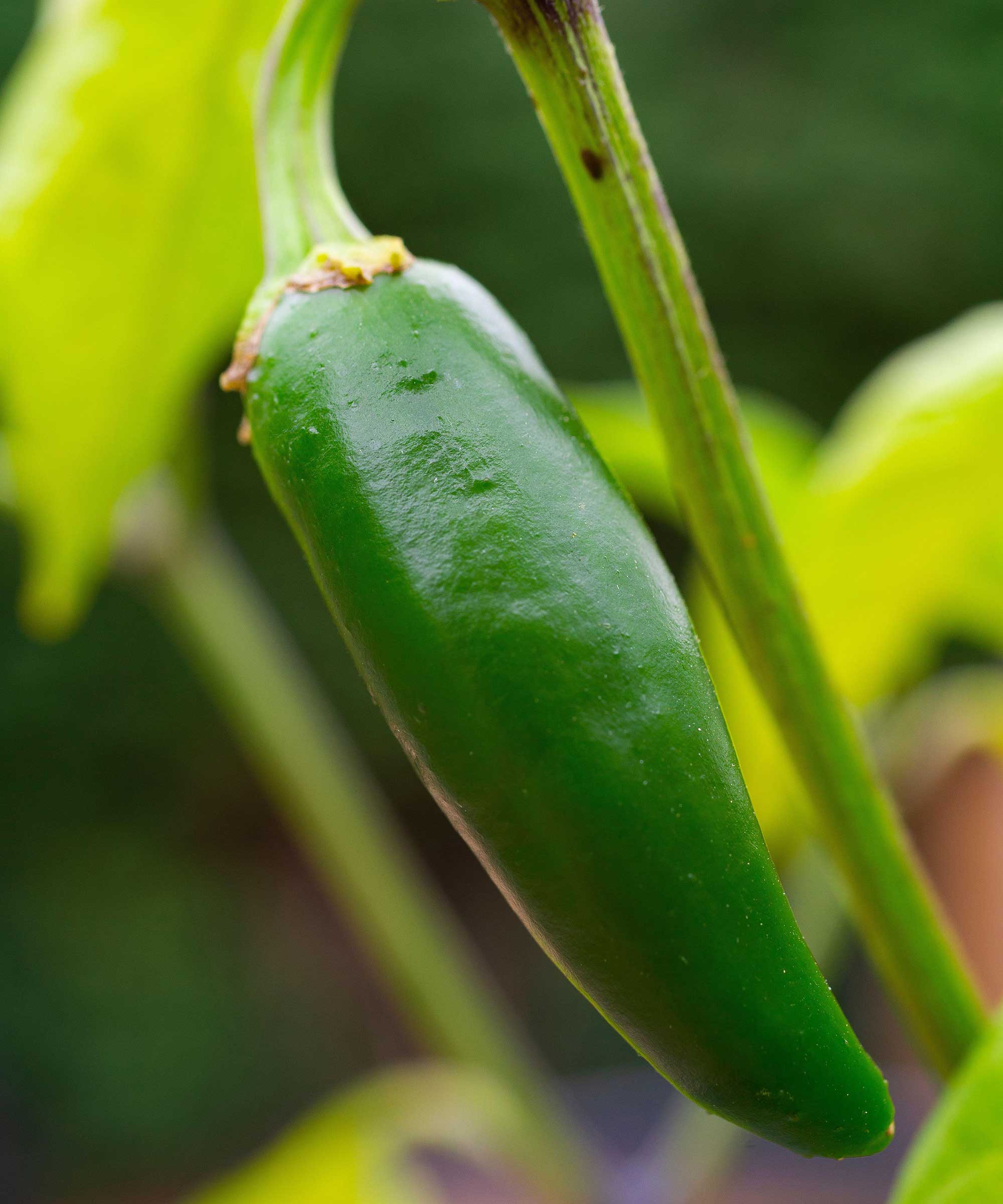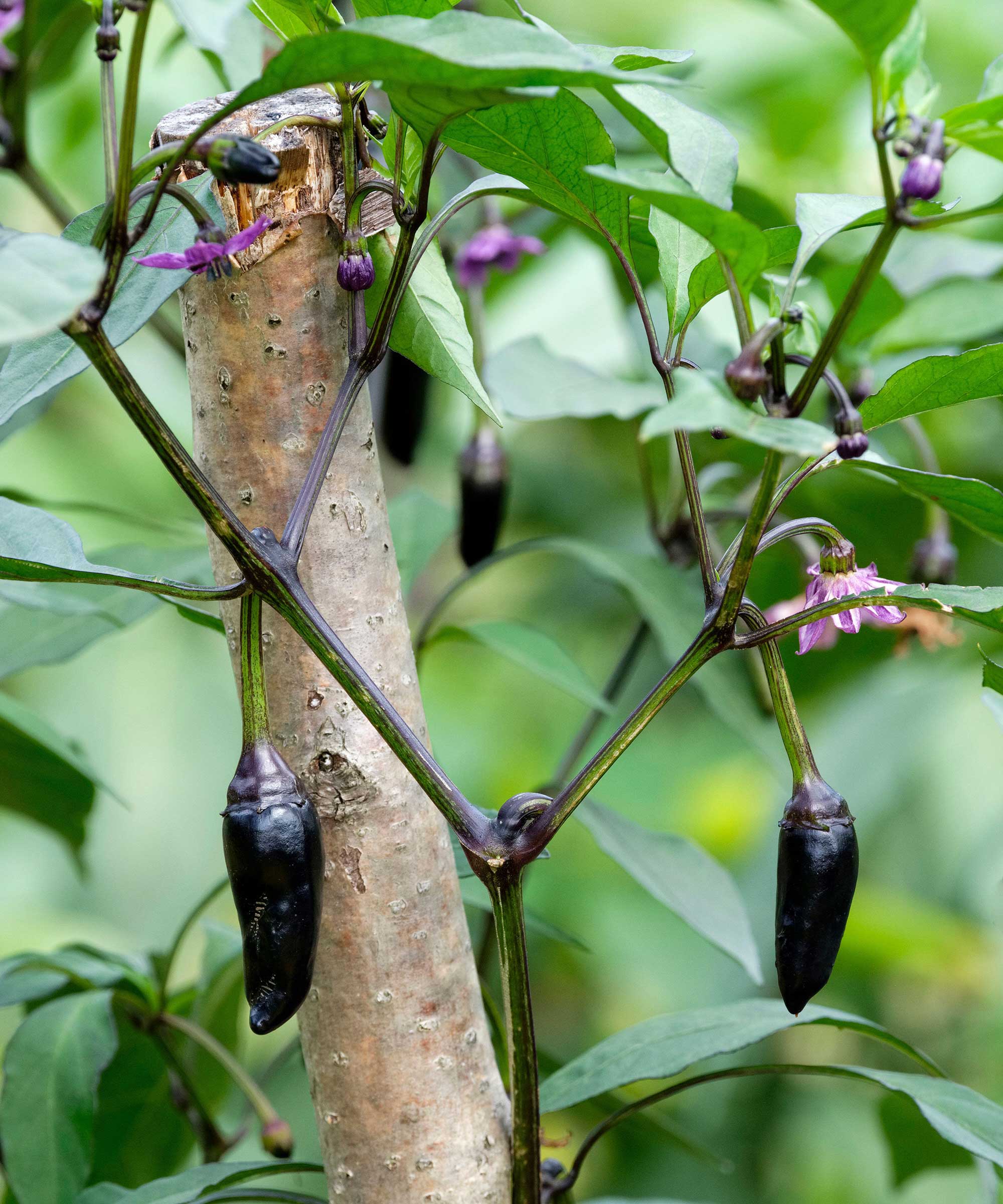Types of chili peppers – the 10 best varieties to grow
Add a kick to your cooking by growing these top types of chili peppers


Late winter and early spring is a great time to start growing chili peppers from seeds. That way, you'll have a plentiful supply of spicy pods throughout the summer. Before sowing can get underway, however, decisions have to be made as to which varieties to grow from the hundreds available.
People who regard mouth-numbing heat as the key to pepper perfection will no doubt look to grow chilis with the highest numbers of Scoville Heat Units (SHU) measuring levels of capsaicin – the alkaloid responsible for ‘the burn’. For those less inclined to play with fire, there are fruity flavors for salsas or hot sauces, larger chilis for stuffing, or varieties that simply bring a subtle spicy warmth to dishes without the sting in the tail. All are perfect plants for kitchens, providing you have a sunny spot to keep them.
Once choices have been made, the secret to success is recognizing that they are used to hot climes, as their USDA hardiness rating of 11-12 testifies. A temperature of 82˚F is ideal for seed germination. Expect to see signs of growth between seven and 21 days and move seedlings to individual pots of compost when they’re around an inch tall.
Young plants do best in greenhouses, conservatories or sunny windows where the temperature consistently remains above 70˚F and light levels are good. Some cultivars can even be moved to a sunny spot outside over the summer months.
10 types of chili peppers for boosting the flavor of your food
Try growing these interesting chili pepper varieties to give meal times an upgrade – plus, they look great in their pots, too.
1. Capiscum chinense ‘Carolina Reaper’

- Strength: Off the scale (2.2 million SHU)
- Color: Matures to red
- When to sow seeds: Mid winter to early spring
- Size of plant: Up to 5ft in optimum conditions
- Good for: Mouth-numbing heat
If you're looking to grow the hottest peppers, this former world record holder offers extreme heat. The rugged-looking ‘Carolina Reaper’ has a fruity, cinnamon- and chocolate-like flavor before the heat rises.
It’s reported to have been developed by ‘Smokin’ Ed Currie by crossing a ‘Naga’ from Pakistan with a Habanero type from the West Indies. Seeds are available to buy from Amazon, but if you do decide to grow this variety, be sure to handle with care.
Design expertise in your inbox – from inspiring decorating ideas and beautiful celebrity homes to practical gardening advice and shopping round-ups.
2. Capsicum annuum ‘Anaheim’

- Strength: Moderately hot (500-2,500 SHU)
- Color: Green ripening to red
- When to sow seeds: Mid winter to early spring
- Size of plant: 20in
- Good for: Salsa and sauces, salads and sandwiches, stuffing and roasting
This prolific chili pepper, available from Burpee, produces 7in long fruits that ripen to a deep red color. It has a moderately hot, sweet flavor and thick flesh that’s great for sauces and salsas.
Anaheim was famously developed by the New Mexico State University during the early 20th Century. It crops over a long period.
3. Capsicum baccatum ‘Lemon Drop’

- Strength: Hot (30,000-50,000 SHU)
- Color: Yellow
- When to sow seeds: Mid winter to early spring
- Size of plant: 3ft 2in under optimum conditions
- Good for: Heat with a lemon twist
This popular bright yellow chili combines heat with a strong lemon flavor. Fruits grow to 1.6in in length and 0.4in wide. It's sometimes sold as ‘Peruvian Lemon Drop’ in recognition of its country of origin, or Ají Limón.
Love the citrusy flavor? Why not grow a lemon from seed in a pot alongside.
4. Capsicum annuum ‘Padrón’

- Strength: Mild to medium (500-2,000 SHU)
- Color: Green, turning red when mature
- When to sow seeds: Mid winter to early spring
- Size of plant: Usually around 20in, but can be taller
- Good for: Frying tapas-bar style, or stuffing
These chilis have a meaty texture and a great flavor. Fried Padrón peppers are a staple of Spanish tapas bars, with customers taking a chance on being served a particularly hot one. They're served when they're green.
As with most chilis, they grow best in full sun. Keep the Mediterranean theme going by growing tomatoes, too, or perhaps create a herb planter filled with oregano, thyme, and basil.
5. Capsicum annuum ‘Jalapeño’

- Strength: Medium (2,500-8,000 SHU)
- Color: Starts green and matures to red
- When to sow seeds: Mid winter to early spring
- Size of plant: 2-3ft
- Good for: Stuffing with cottage cheese, or for topping pizzas and chili con carne
The Jalapeño is one of the world’s best-known types of chili peppers and is very popular for Tex-Mex cooking. These chilis also make a great topping on many pizza recipes when sliced.
When growing jalapenos, plants are compact and produce lots of meaty fruits that measure around 2in and are among the earlier chilis for harvesting. Pick jalapeños when they've turned red for more sweetness. Seeds are available to buy from many retailers, including Amazon.
6. Capsicum annuum ‘Hungarian Hot Wax’

- Strength: Medium (1,000-15,000 SHU)
- Color: Yellow ripening to orange
- When to sow seeds: Mid winter to early spring
- Size of plant: 2-3ft
- Good for: Stuffing, grilling, pickling
This prolific and versatile medium-hot chili has thick, crunchy flesh that’s great in winter stews and useful for making pastes and hot paprika.
Also known as ‘Hungarian Yellow Wax’, each fruit grows to around 6in and turns orange-red when fully mature, but is usually harvested before this point to encourage further fruiting.
7. Capsicum annuum ‘Goat Horn’

- Strength: Medium (20,000-50,000 SHU)
- Color: Green, maturing to red
- When to sow seeds: Mid winter to early spring
- Size of plant: 2-3ft
- Good for: Turning up the heat in a Thai green curry
This is a good choice for those partial to Thai curries, or who want to add a bit of heat to stews. The fruits of this plant stay green for quite a while before turning bright red when ripe.
It produces high yields of cayenne-style chilies measuring 4-6in with a good flavor.
8. Capsicum annuum ‘Numex Twilight’

- Strength: Medium to hot (30,000 SHU approximately)
- Color: Purple, yellow, orange and red
- When to sow seeds: Mid winter to early spring
- Size of plant: Around 20in
- Good for: Ornamental and cooking
The array of cone-shaped fruits on this plant often includes four colors, making it a great variety to grow in pots as part of your indoor garden.
Each inch-long pod of ‘Numex Twilight’ packs a punch of heat. Pods sit upright against green foliage and the plant can be grown without support. Seeds are available on Amazon.
9. Capsicum annuum ‘Prairie Fire’

- Strength: Hot (Up to 70,000-80,000 SHU)
- Color: Chartreuse, cream, yellow, orange and red
- When to sow seeds: Mid winter to early spring
- Size of plant: 18in
- Good for: Ornamental and cooking
This prolific chili produces tiny upright pods in chartreuse, cream, yellow, orange and red, above green foliage. It's a fast-growing variety and has a fruity and fiery flavor that’s great for adding a kick to dishes.
It fruits over a long season and grows in a compact way, making it great for pots on windowsills or, in warmer climes, outdoor window boxes.
10. Capsicum annuum ‘Hungarian Black’

- Strength: Medium (5,000-10,000 SHU)
- Color: Black or reddish-brown
- When to sow seeds: Mid winter to early spring
- Size of plant: 2.5-3ft
- Good for: Using raw in salads, cooking in mild dishes, or drying for future use
The eye-catching fruit of this tasty chili ripens to a unique purple-black color. Its tall plants have green leaves with purple veins and pretty, purple-edged blooms.
This pepper matures quickly and should do well in a sunny spot in a garden planter box on the patio.

Sue Bradley writes about gardening, food and wildlife, and the fascinating people who are passionate about these subjects, for a variety of magazines. She served a newspaper apprenticeship and worked on local and regional titles in the West Country before becoming a freelance features writer. She’s a member of the Garden Media Guild and the Guild of Food Writers.